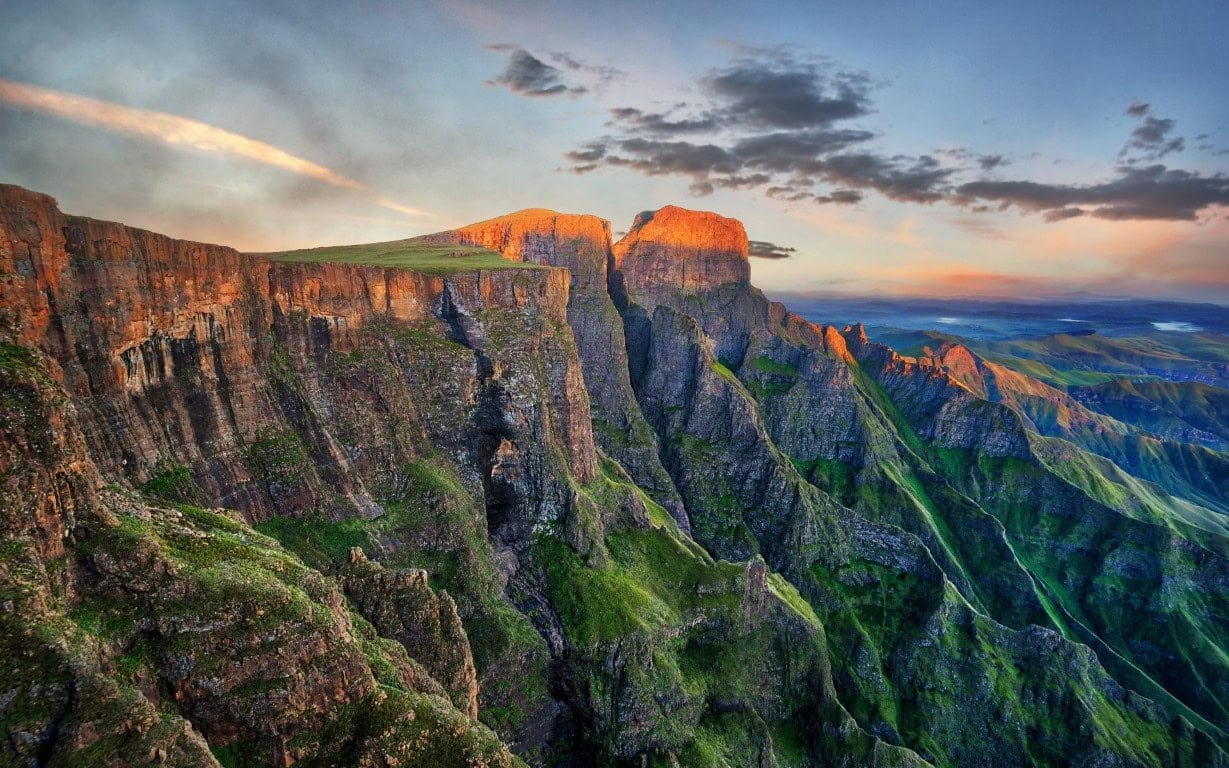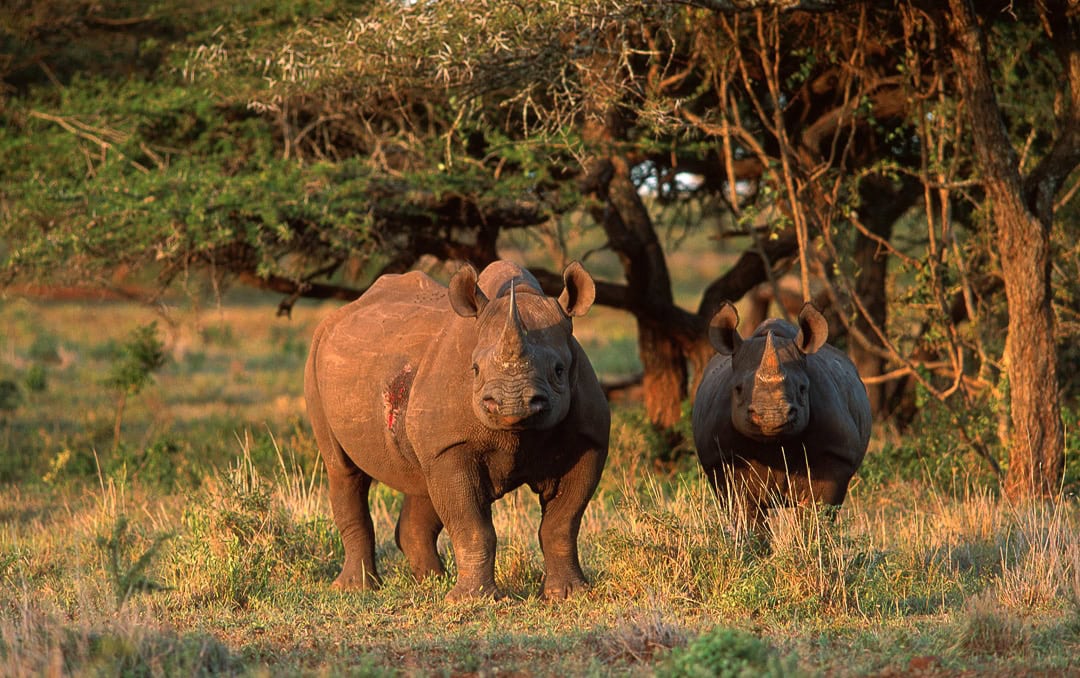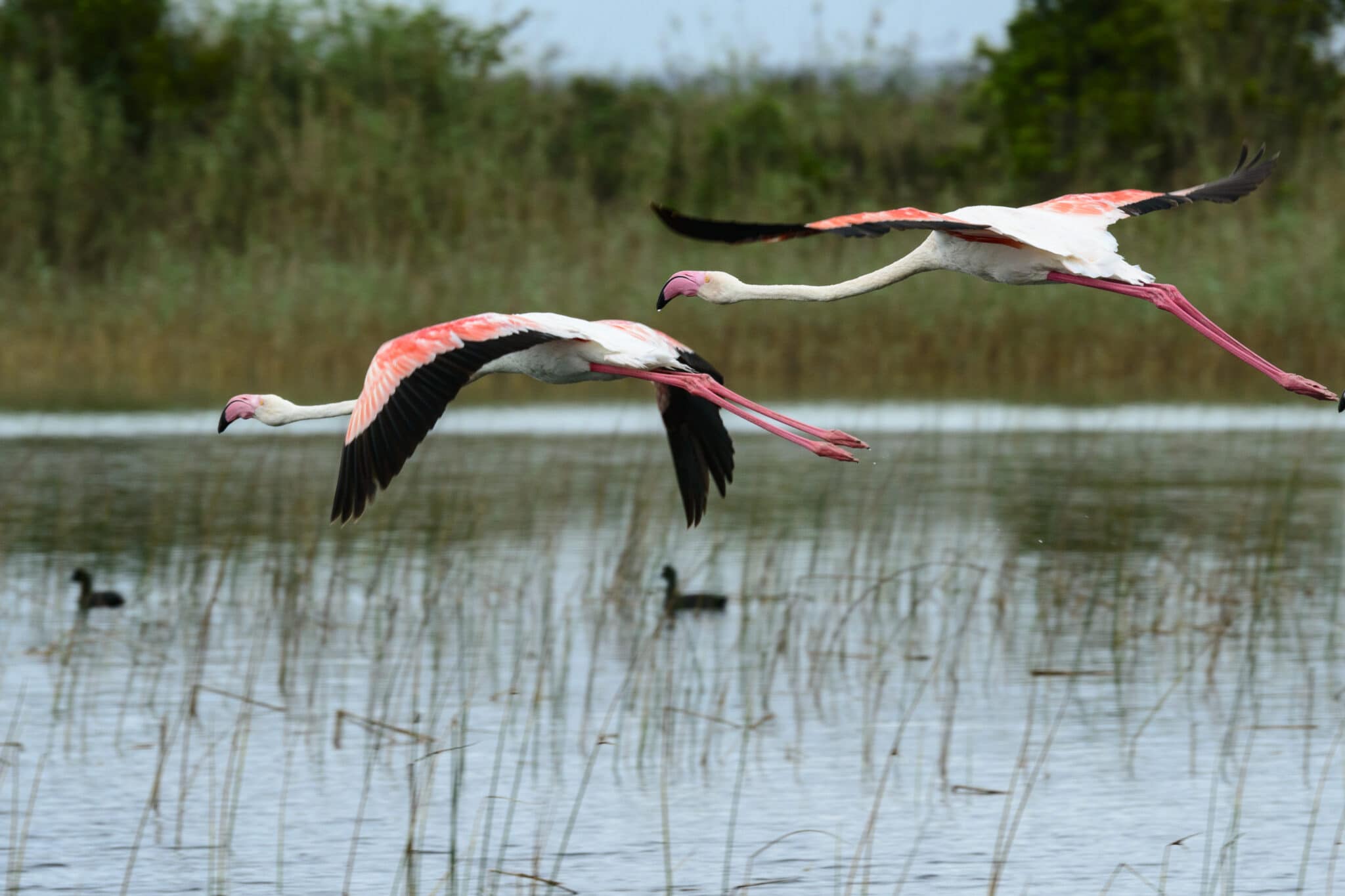The diverse landscapes, abundance of available activities, and rich local culture all merge to make KwaZulu-Natal a premier destination during a trip to South Africa. Go on an adventure along the hiking trails of the Drakensberg, take to the skies in a hot air balloon or helicopter, visit historical battlefields, and go on a Big Five safari. All of this and so much more is waiting for you in KwaZulu-Natal.
Must-Visit Areas in KwaZulu-Natal

Picture flying over a vast mountain range and heading into the wilderness to spot an elusive leopard:
Drakensberg Mountains: For Adventurous Travellers
Only a few hours’ drive from the main city of Durban are the Drakensberg Mountains, known for its hiking trails and scenic beauty.
Get into the air for a bird’s-eye view of the mountains in a hot air balloon or helicopter, or get your adrenaline pumping during a treetop canopy tour. Mountain bike and horse riding trails wind through the area, which also include a range of accommodation options.
Battlefields Route: A Peek into History
For history buffs and those wanting to take a look into the past, the Battlefields Route is not to be missed.
It has the largest concentration of significant battles and war-related sites in South Africa, with 82 battlefields, museums, old fortifications, and places of remembrance. Explore historical sites that give insight into the Anglo-Zulu and Anglo-Boer wars.
Hluhluwe-Imfolozi Park: Big Five Safari Destination
Just a three-hour drive from Durban, Hluhluwe-Imfolozi Park is a Big Five South Africa safari destination renowned for rhino conservation.
Once the personal hunting grounds of King Shaka, now this park is ideal for game drives, hikes, and bush walks to explore the diverse range of fauna and flora. Besides the Big Five, visitors here can also spot wild dogs, giraffes, cheetahs, nyalas, and a variety of birdlife.
When’s the Best Time to Visit KwaZulu-Natal?

The dry winter season (May to September) is the best time for game viewing in KwaZulu-Natal. With fewer water sources, wildlife is easier to spot. This time of year is also ideal for visiting the mountains and hiking due to the dry conditions.
Wildlife Found in KwaZulu-Natal

KwaZulu-Natal is home to a wide range of wildlife. In game parks and reserves, you can spot rhinos, elephants, lions, leopards, hippos, and cheetahs, to name a few.
Along the coast, you can spot whales during their migration (May through to November) as well as dolphins. While diving and snorkelling, see an array of marine life, including manta rays, turtles, reef sharks, and a variety of colourful fish.
How to Get to KwaZulu-Natal
King Shaka International Airport in Durban is the main gateway into the province. There are also regional airports that serve game parks and smaller cities.